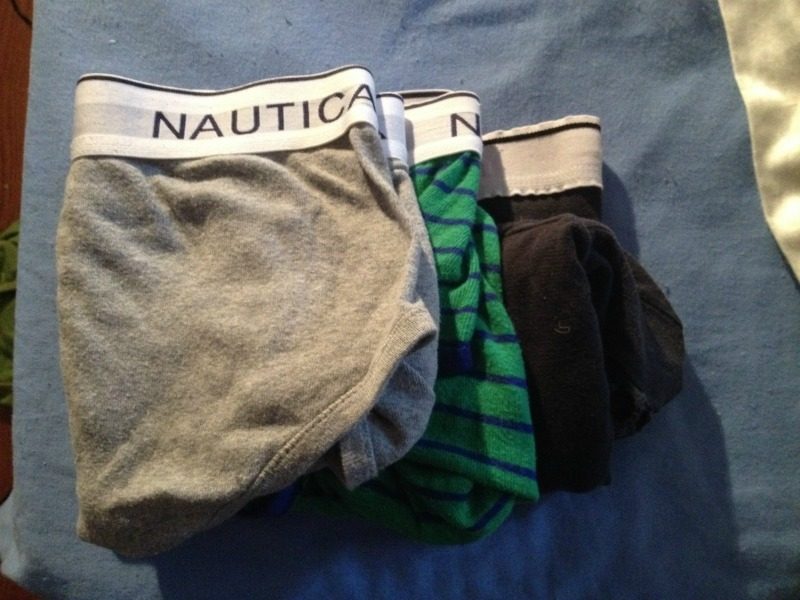Dropping Your Drawers
If you’ve seen me with my pants down for some intimate or random reason, you know that I’ve not always been possessed of the most stylin’ underwear. In fact, until a butch bro-friend started shopping for me, I would say the undergarments lurking beneath my overgarments were downright unpresentable. But now, thanks to folks at the National LGBT Cancer Network (not to mention my butch-bro friend), my underwear can actually come in handy for something other than serving as an embarrassing example of bad butch fashion.
I talked with Liz Margolies, the founder and executive director of the National LGBT Cancer Network about their Behind Closed Drawers Project:
Tell me a little but about the Behind Closed Drawers initiative. How did it start? What are your goals? What success have you seen so far? How did the Network get involved?
Behind Closed Drawers is a combo community-education and fundraising campaign. Specifically designed to be lighthearted and sexy, we think it can raise awareness of anal cancer without the fear, shame or “ew” factor that can often accompany talk about the disease.
As the founder and executive director of the National LGBT Cancer Network, our mission has always been to educate our community about cancer, train healthcare providers to offer safe and welcoming care to LGBT patients/clients and provide online support services to LGBT cancer survivors. When anal cancer recently rose to the top of my “we gotta do something about this” list, I contacted our design team at Tusk and Dagger to partner in the campaign. They have always been our go-to people and they understand the importance of good messaging and targeted images to our community. Joe and Erik get total credit or the look and the name of the FUNdraising campaign.
This really is a two-part plan. What you see so far in social media is only the beginning. We intend to use the money we raise to create a far broader community education project, coupled with an expansion of our directory of free/low cost LGBT-friendly cancer screening facilities across the country. Our plan is to dig deep and find a safe and welcoming anal cancer screening place within driving distance of everyone in this country.
Who is at risk for anal cancer? You mention specifically men who have sex with men but what about women who have sex with women if part of their sexual practices include anal penetration? What about non binary folks and trans folks ?
Nearly all cases of anal cancer are caused by HPV, the same virus that causes cervical cancer. While the disease is fairly rare in the general population, it is up to 34 times more prevalent in men who have sex with men. Those who are HIV positive and/or smoke cigarettes are at greatest risk. While, only a few strains of HPV cause cancer, the virus is found in 65% of HIV- men and 95% of HIV+ MSM. While data is scarce for rest of our community, we know that anyone who engages in anal sex has an increased risk for anal cancer. so many transgender women are also at increased risk. But, really, ANYONE who engages in anal sex should have this on their radar, especially since HPV is spread through skin to skin contact, including through [uncovered] hands, and condoms are therefore not adequate protection.
What is the screening test for anal cancer? Why aren’t more people aware of it? Are there any recognizable symptoms that people should be aware of?
A growing number of physicians and health activists recommend that all men and transgender people who have anal sex with men, especially those who are HIV+, be screened every 1-3 years depending on their immunological well-being and CD4 count. They suggest that HIV negative individuals be screened every 3 years. Women who test positive for cervical HPV may also want to test for anal HPV. We recommend that you take your tush seriously. If you have any unusual symptoms, like itching, hemorrhoids that don’t clear up, bleeding etc, you get checked out by a healthcare provider. Currently there are two tests: a digital rectal exam (DRE) and an anal pap smear, similar to a cervical one.
Why underwear?
The campaign works by asking people to donate and then post a pic of their underwear on social media and then challenge several friends to donate and “show me yours”. We chose to focus the FUNdraising part on underwear for several reasons. First, it is where the tush lives for most of the day. But, it is also intimate and private, like anal cancer. We also wanted to choose something to engage our community. It could be a great way to flirt and, face it, we all are kinda curious about each other’s underwear. It has also been great to see how people use the pictures to express themselves, like if they posed IN their underwear or not and, if not, where they chose to drape them for the picture.
How can folks find out more?
You can learn more about the campaign and anal cancer on our website, www.cancer-network.org. The HPV and Anal Cancer Foundation is another great resource, http://www.analcancerfoundation.org
